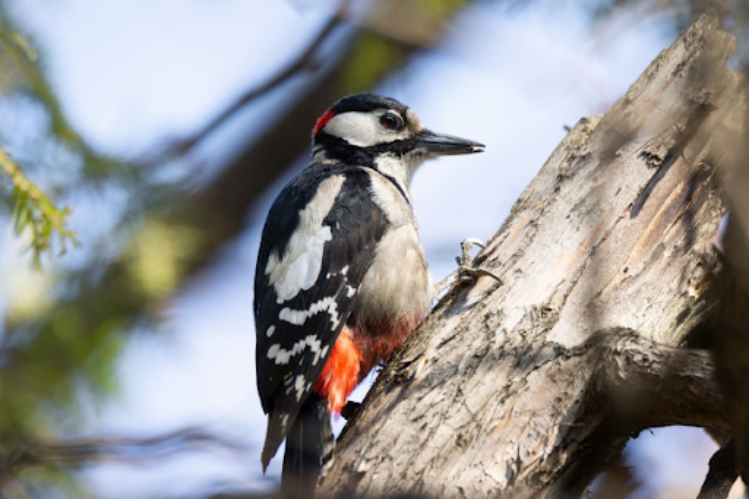
If you live in an area where woodpeckers are common, you may have experienced problems with woodpeckers damaging your home. These determined birds are capable of drilling through a variety of materials, and can make a mess of your home’s exterior.
Once they penetrate your home’s facade, they can allow moisture to infiltrate, as well as other animals. This type of damage can also detract from your home’s curb appeal, which means that protecting your home from woodpeckers can help your property maintain its value, while also helping it to remain in good shape.
Replacing your home’s siding with fiber cement is one way you can help eliminate the risks that these annoying birds may bring.
Why Woodpeckers Drill into Homes

Woodpeckers are small birds that can do a lot of damage in a very short period of time. In ideal situations, they’ll mostly stick to trees and fallen logs, drilling into the wood to find food. While most woodpeckers eat a varied diet that includes things like berries, they particularly enjoy the types of insects that tend to make their homes inside wood. For this reason, most woodpeckers will drill into any wooden surface where they can hear the activity of insects inside.
Woodpeckers don’t just drill for food however; if they find a material that’s soft enough, they may drill out a larger hole to build a nest in. And if the woodpecker in question is attempting to attract a mate, they may also drill or bang simply to create noise, as this will attract the attention of other woodpeckers.
If your home is made of wood, particularly cedar, which is soft enough to be particularly attractive to woodpeckers, they’re going to drill into it. They may hear the presence of insects such as termites or carpenter ants inside your walls, and they’ll make holes to attempt to get to them.

If the siding or material that is cladding your home is soft enough and easy for them to drill into, a woodpecker may continue pecking and drilling at your home even if they don’t actually discover any insects. They do this to build their nests. For example, if you had a water pipe that was dripping inside a wall, a woodpecker may mistake this sound for insect activity and begin to drill. Once they’ve drilled long enough, they may discover there are no insects, but at this point, they may decide to move in. And even if they don’t, they’ll still have created a hole large enough for other animals or pests to get into.
Choosing the Right Woodpecker Resistant Siding
If you’ve had issues with woodpeckers in the past, you’ll know how troublesome they can be. Unfortunately, it isn’t always as simple as replacing your siding with something that isn’t wood. Some sidings can have other attributes or issues that make them just as attractive to woodpeckers, but for other reasons.
Aluminum and steel siding may seem like a great deterrent for woodpeckers, because they resist insect activity. However, they do make a loud sound when banged on. Many woodpeckers like to find metal to drill on during mating season, as it’s an effective way for them to find mates. If you’ve had woodpeckers attack your home in the past, replacing your siding with metal siding may not solve the problem, and will only leave you with dents and a much louder banging to deal with.
Vinyl siding is also resistant to insects, and isn’t very attractive to woodpeckers. But, it’s very brittle in cold weather and often cracks and breaks during the winter. If you live in a cold climate, this type of damage can allow insects to get behind the vinyl, and gives an opening for the woodpeckers to go after them.
The Best Alternative

Rather than using an alternative to wood siding that can still attract woodpeckers, a good siding to use is fiber cement. Fiber cement resists insects and moisture, two of the things that can attract a woodpecker to your home. While it looks like wood, it’s actually a durable blend of sand, silica, and cellulose fiber, none of which is anything that most woodpeckers would be attracted to.
It’s also not metallic, and won’t make a hollow clunking sound when hit, so this reduces the chances that woodpeckers will want to start drilling your home simply for the sound. And because fiber cement is a durable material, it’s unlikely that it will develop the kinds of holes that vinyl can develop, so woodpeckers won’t find an opening to start drilling in.
Get Woodpecker Resistant Siding
Woodpeckers can be a serious annoyance, damaging your home and keeping you up with their banging. Make sure that you protect your home with a siding that will resist woodpeckers by eliminating many of the causes that bring them to a home. Invest in fiber cement siding for your home, and make the woodpeckers look elsewhere for their next meal.
For a durable siding material, contact Allura to speak with an expert.




